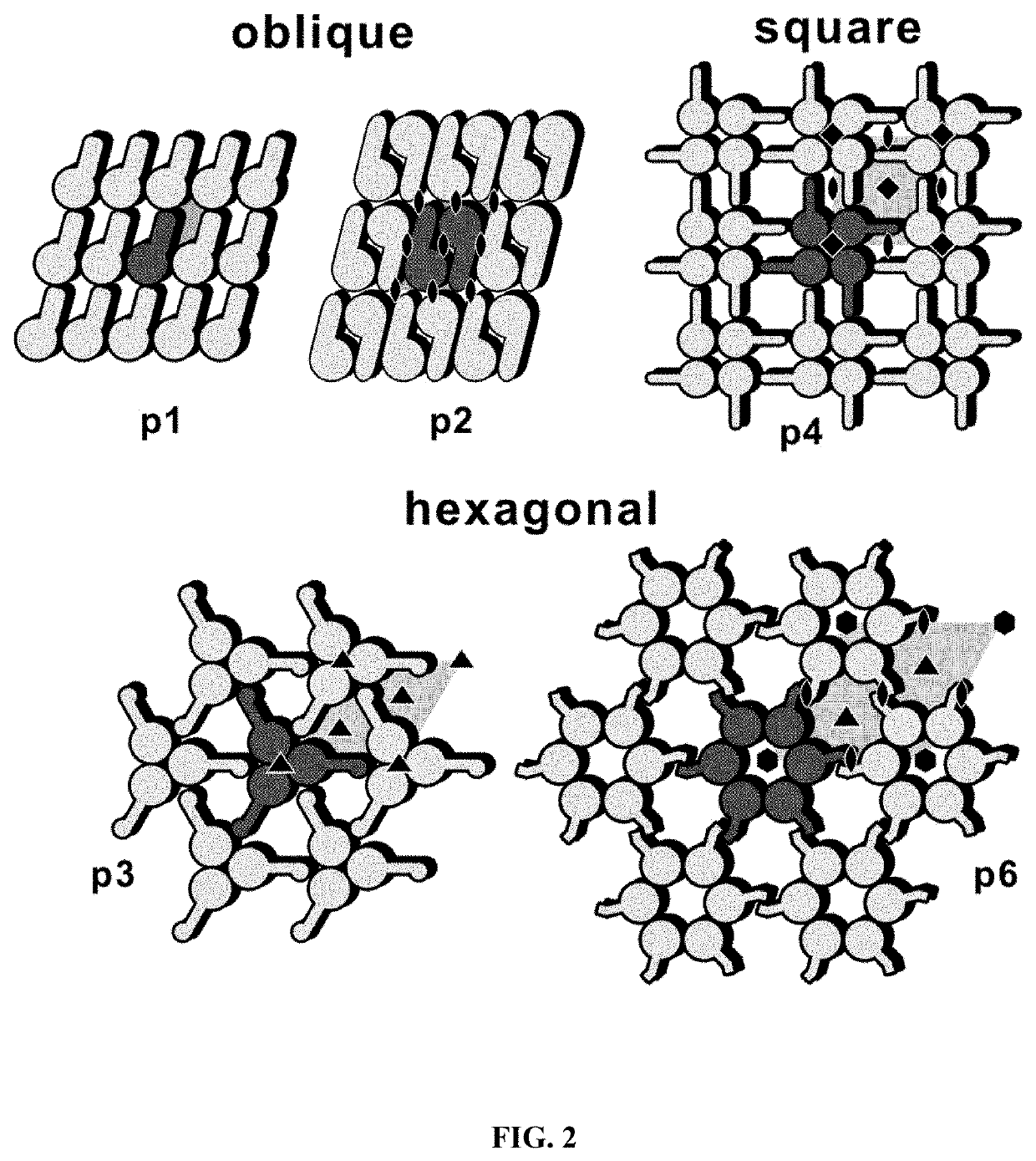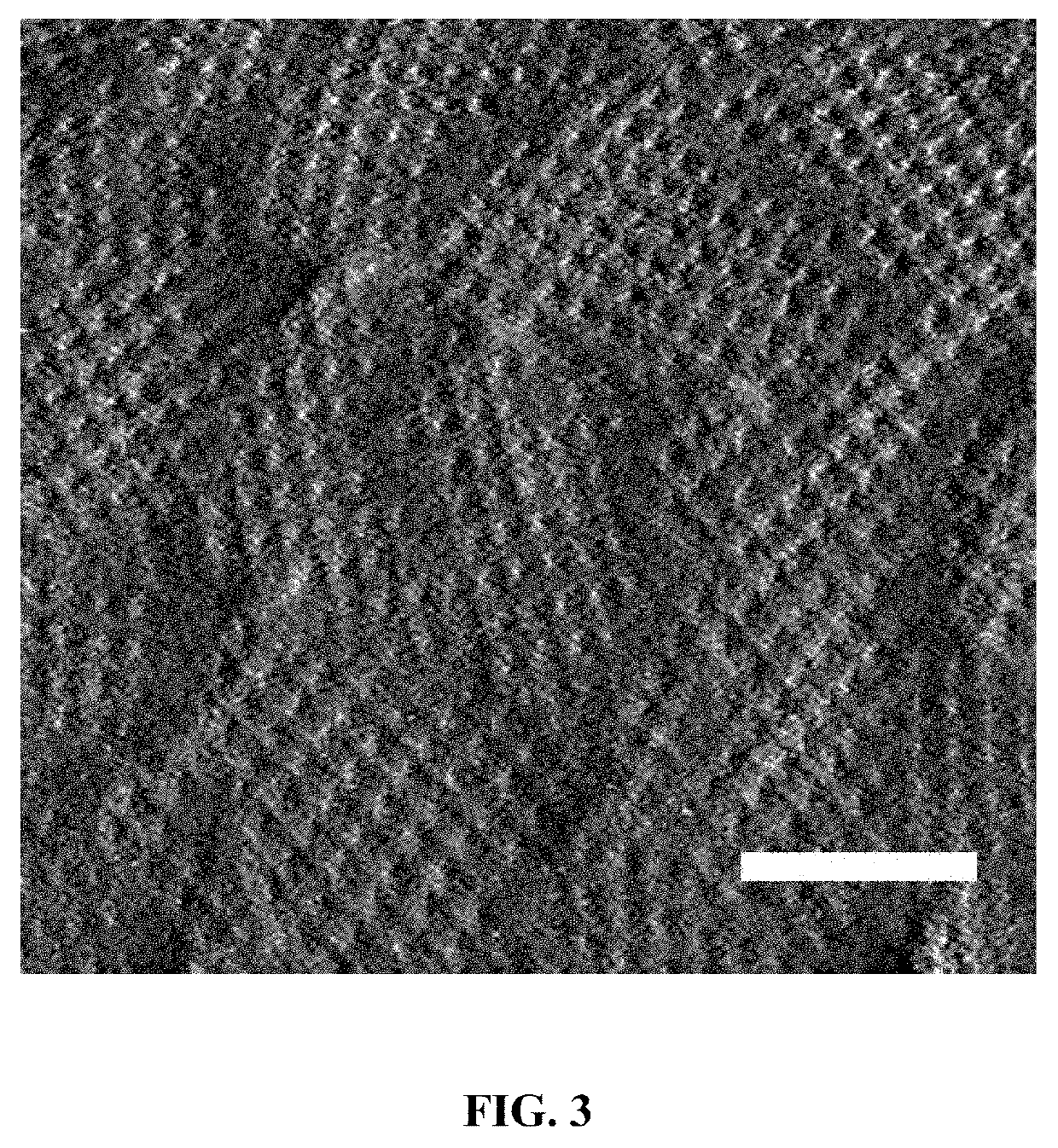S-Layer Protein 2D Lattice Coupled Detergent-Free GPCR Bioelectronic Interfaces, Devices, and Methods for the Use Thereof
- Summary
- Abstract
- Description
- Claims
- Application Information
AI Technical Summary
Benefits of technology
Problems solved by technology
Method used
Image
Examples
example 1
Recombinant S-Layer Potein SbpA31-1068ZZ Bnds CXCR4QTY-Fc Materials and Mthods
2.1 Production of S-Layer Protein
[0113]The chimeric gene encoding a C-terminally-truncated form of the S-layer protein SbpA from Lysinibacillus sphaericus CCM 2177 and two copies of the Fc-binding Z-domain was constructed, cloned, and heterologously expressed in Escherichia coli HMS174(DE3) as described in [A7] [A19]. The recombinant S-layer protein was over-expressed in E. coli and accumulated in inclusion body like structures which were stored after a downstream processing including a homogenization step at −20° C. [A20] [A16].
2.2 Production of a Monomeric S-Layer Protein Solution
[0114]The starting point for the production of a monomeric protein solution of the S-layer fusion protein rSbpA31-1068ZZ which recrystallization properties can be started with the addition of CaCl2 ions were inclusion body extracts purified by gel chromatography as described previously [20]. Briefly, 5M GHC1 (Gerbu Nr. 1057; in ...
example 2
The QTY Code: A Tool for Engineering Detergent-Free Chemokine Receptors CCR5, CXCR4, CCR10 and CXCR7 that Retain Ligand-Binding Activities
[0140]Structure and function studies of membrane proteins, particularly G protein-coupled receptors (GPCRs) and multiple segment transmembrane proteins, require detergents. Without detergents these integral membrane proteins aggregate and are nearly impossible to analyze. We have devised a useful tool, the QTY Code, for engineering hydrophobic domains to become detergent-free, namely water-soluble, without significantly altering protein structure and function. Here we report using the QTY Code (glutamine, threonine and tyrosine) to systematically replace the hydrophobic amino acids leucine, valine, isoleucine and phenylalanine in the four chemokine receptors CCR5, CXCR4, CCR10 and CXCR7. By introducing ˜19%-29% systematic QTY changes in these receptors (˜47% to ˜58% in the transmembrane helices), we were able to engineer receptors that become wate...
PUM
| Property | Measurement | Unit |
|---|---|---|
| Fraction | aaaaa | aaaaa |
| Temperature | aaaaa | aaaaa |
| Molar density | aaaaa | aaaaa |
Abstract
Description
Claims
Application Information
 Login to View More
Login to View More - R&D
- Intellectual Property
- Life Sciences
- Materials
- Tech Scout
- Unparalleled Data Quality
- Higher Quality Content
- 60% Fewer Hallucinations
Browse by: Latest US Patents, China's latest patents, Technical Efficacy Thesaurus, Application Domain, Technology Topic, Popular Technical Reports.
© 2025 PatSnap. All rights reserved.Legal|Privacy policy|Modern Slavery Act Transparency Statement|Sitemap|About US| Contact US: help@patsnap.com



